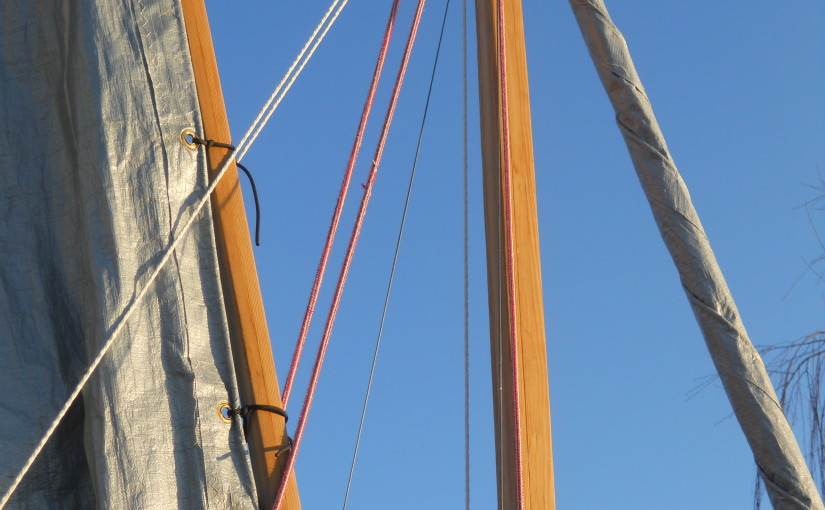Nephi’s Courage sports a nifty gunter rig, and I really like it. The rig allows me to sport a ridiculous amount of sail area on spars made from 12 foot 2×6 boards. Yes, 12 foot spars don’t fit in the boat, but they do fit well on top of my minivan.
Of all of the design decisions I made when building Nephi’s Courage the decision to use a gunter rig was by far the most nerve racking. I’d never sailed a gunter-rigged boat before. Heck, I had never even seen a gunter-rigged boat before. I had no idea how the rig would work in real life. Fortunately, I live in an age and time where I do not have to rely on just my own knowledge and the knowledge of the boat owners in my area. Once I started thinking about a standard sloop rig with spars that were less than 12 feet the gunter rig started to look like the right solution. However, it wasn’t until I started watching videos of Mirror Dinghies that I started to believe that a gunter rig might actually work in real life. Now that I have sailed one for a season I am sold.
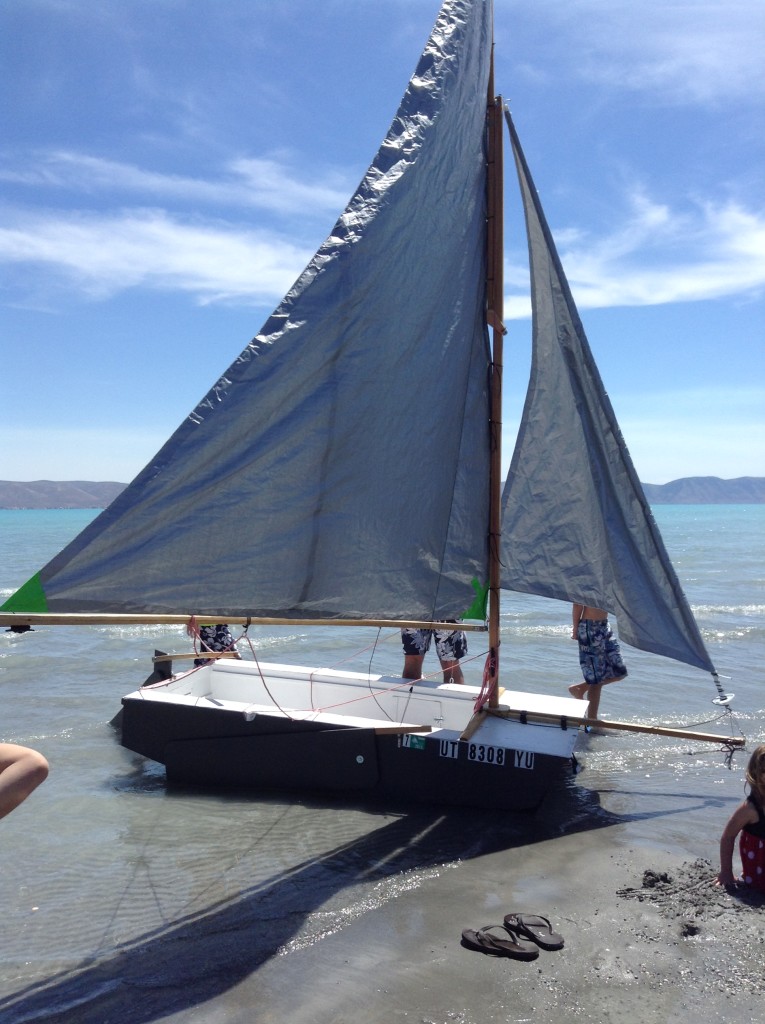
There was, however, one serious problem. I kept breaking the gunter jaws.
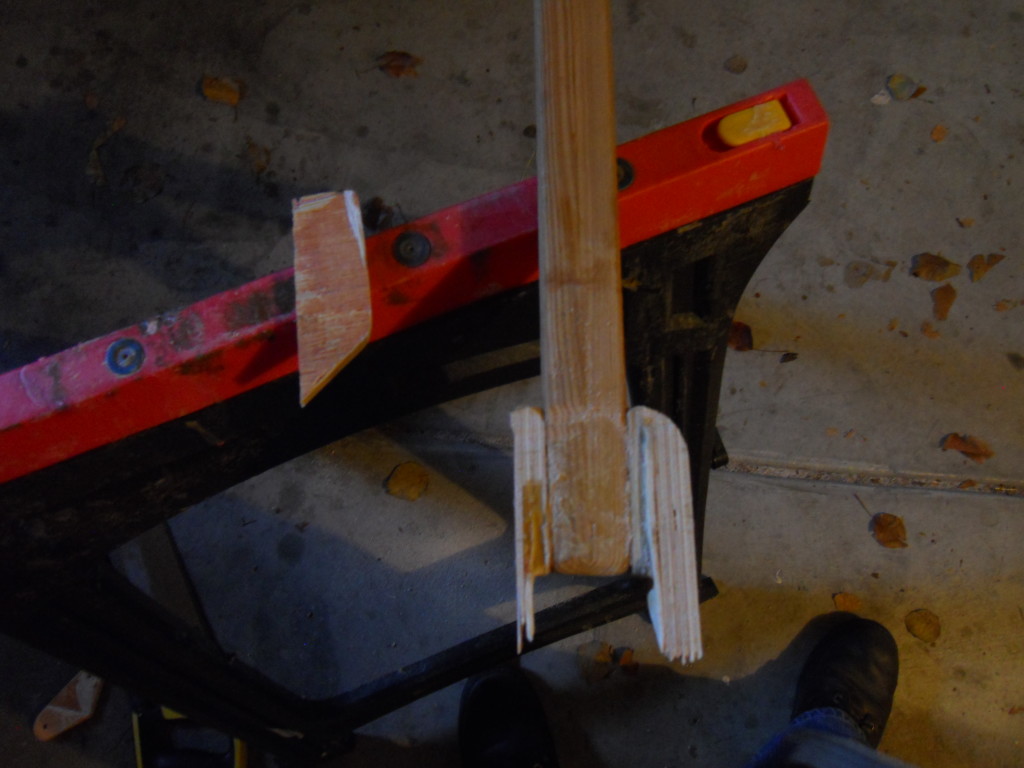
The root of the problem, of course, is that my mast is square. That meant that the gunter jaws could not rotate around the mast. This was not a problem once the gunter was all of the way up. The halyard holds the gunter flush against the mast and so the wind has almost no leverage to spin the gunter around the mast. However, care had to be taken when raising and lowering the sail. The top of the gunter tended to drop first, and once that happened the wind would want to push the gunter around the mast, and the jaws would break. It was easy enough to take care of while the boat was still on shore, but every time I tried it on the water the gunter jaws snapped like a wishbone. Jury rigging a repair was straightforward. A small length of cord around the bottom of the gunter would work well enough to get me back on my way, but I decided I needed to do better.

My first instinct was to round the mast. That’s the solution that most gunter-rigged designs adopt. My pdracer was even well suited to this modification. The mast is stayed, so the fact that the mast would be less stiff was not really an issue. Thanks to the paddle and the oars I had made, I even had had some recent practice turning square pieces of lumber into round ones. In the end, however, I decided against it.
The official reason that I didn’t want to round the mast was that I may, some day, decide to switch to a balanced lug rig. The gunter rig that I currently use was drawn up specifically so that the center of effort of the sails fell in the same place as the balanced lug rig that I originally planned for the boat. I could even reuse the mast and boom (I would need to make a new yard though, the 8 foot gunter is too short). The mast step is the same for both rigs, and the leeboard placement is close enough that it would have been an easy adjustment to sort out.
The real reason that I decided against rounding the mast was that I was afraid of screwing up the mast. The mast took a long time to make, and it required the help of my neighbor that owned a table saw. If there was a solution that didn’t require changing the mast then I was definitely interested.
So I scoured the Internets, and I put on my thinking cap, and this is what I came up with.
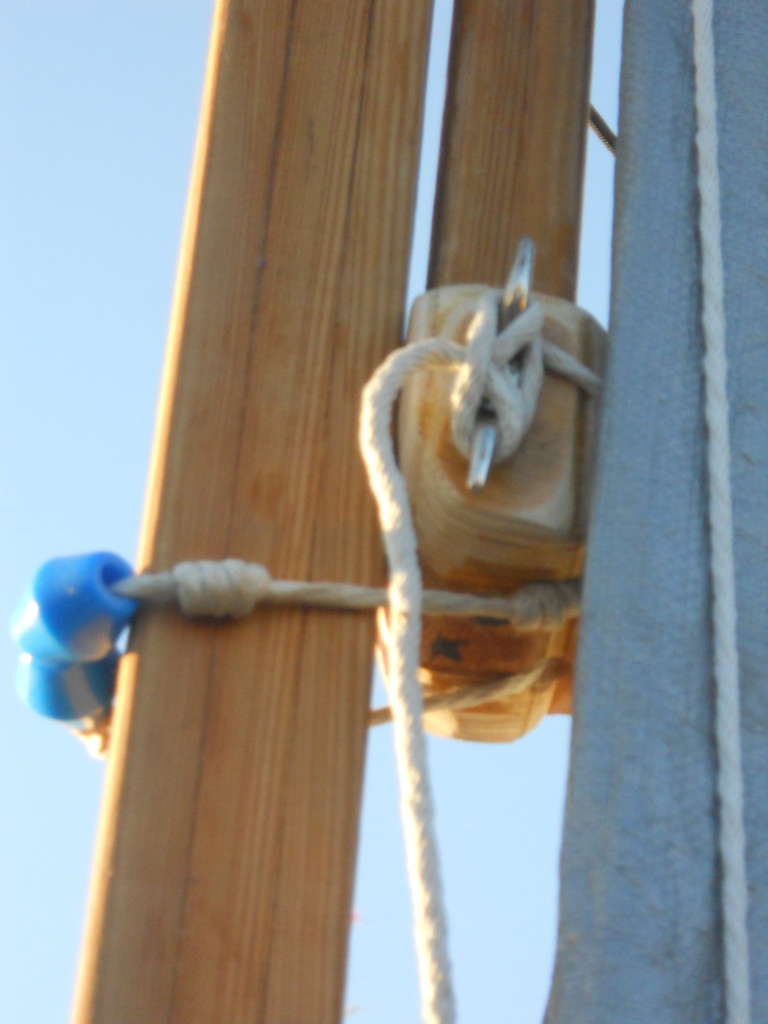
I have now basically replaced the jaws with a short piece of line. A 3/4 inch piece of Douglas Fir was glued to the back and the holes for this line were purposefully offset near the back so that when the gunter is pulled completely upright that the line binds the bottom of the gunter tightly to the mast. Getting just the right amount of slack was tricky, so I added a stopper knot so that I could pull the line tight, cleat it off, and have it be just the right tension.
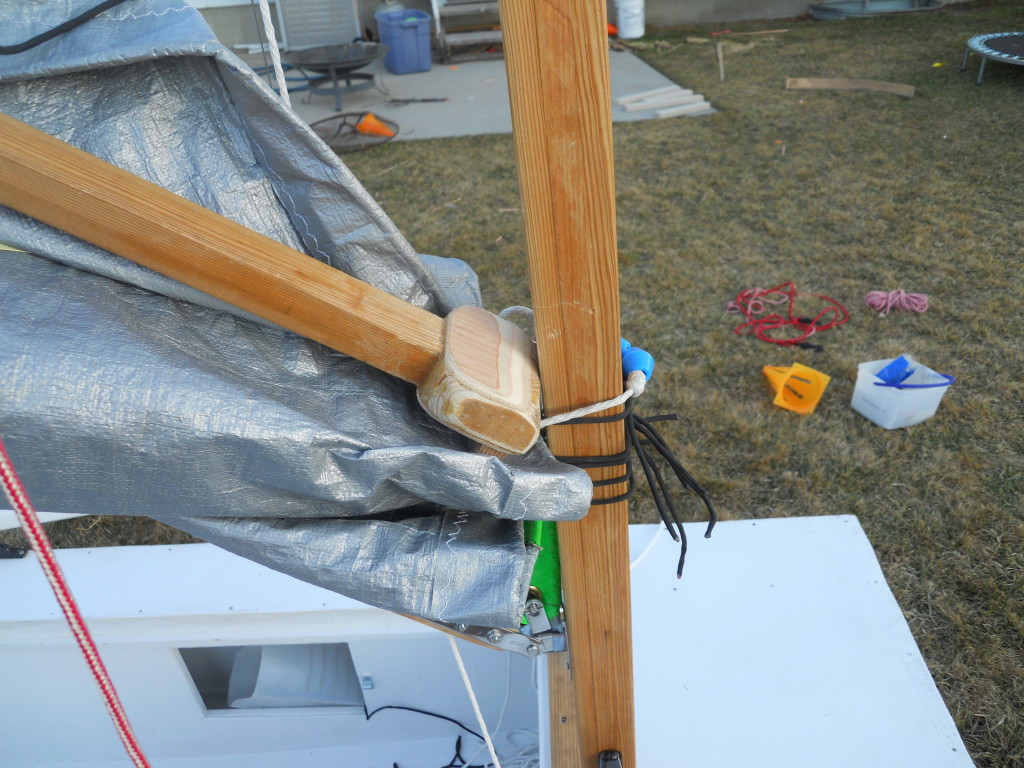
I’ve done a bit of testing (in my back yard only, so far, but spring is nearly here), and the new setup definitely works much better than the old gunter jaws. Getting the gunter can be a bit difficult as the head of the sail wants to rise first and so the line at the bottom starts binding down hard before the sail is all of the way up. The two parrel beads that I added help a lot. If I was less stubborn I would probably just loosen the tension in the line I use at the bottom of the gunter as a jaw replacement. However, I really like the fact that, once deployed the gunter basically becomes an extension of the mast. There is essentially no play at all. So instead I simply push the throat of the gunter most of the way up first. Since I can do this sitting down on the air box, I think that it is pretty safe to say that I will be able to do the same thing out on the water. We’ll see.
Most importantly, when I release the halyard the sail comes right down with no issues whatsoever. Since my primary goal was to be able to strike the sails while I am out on the water, this modification is a huge win.
